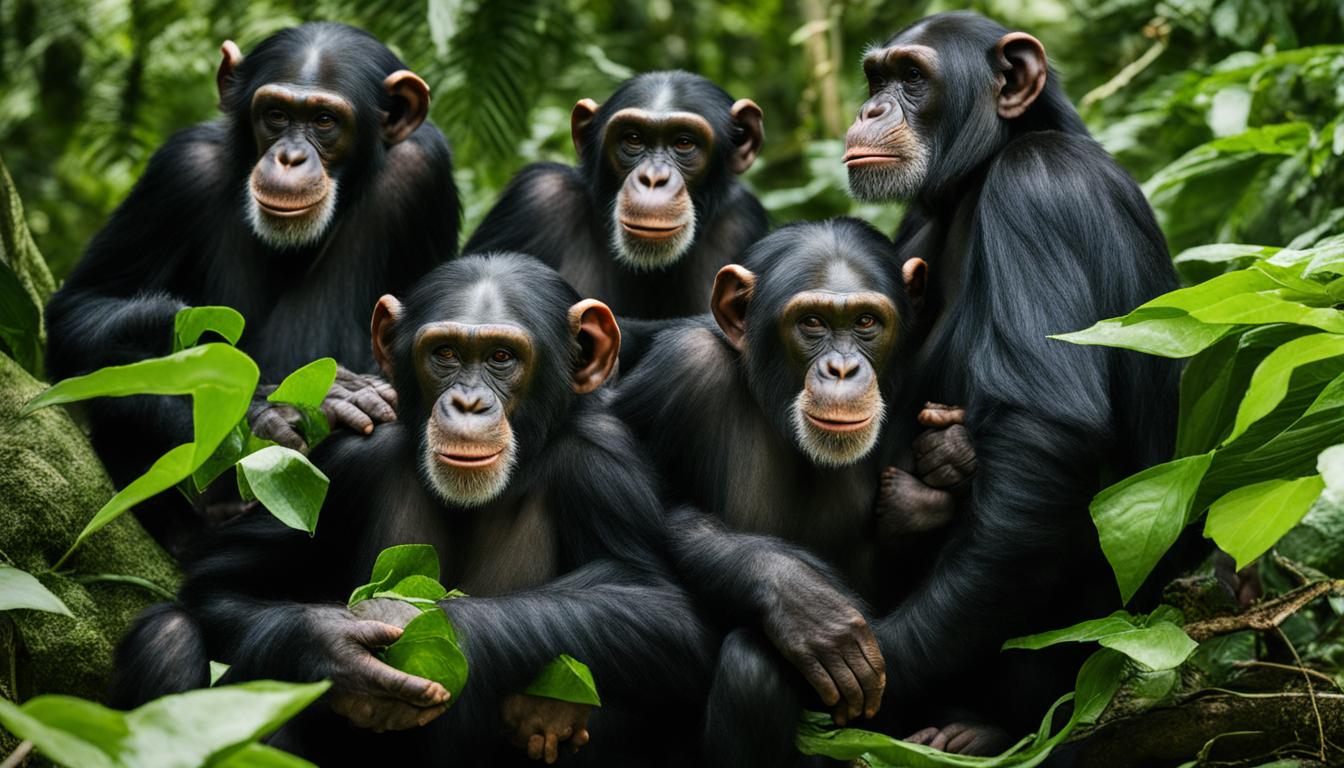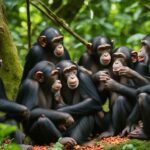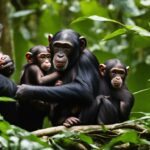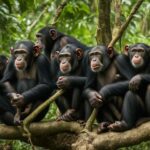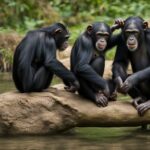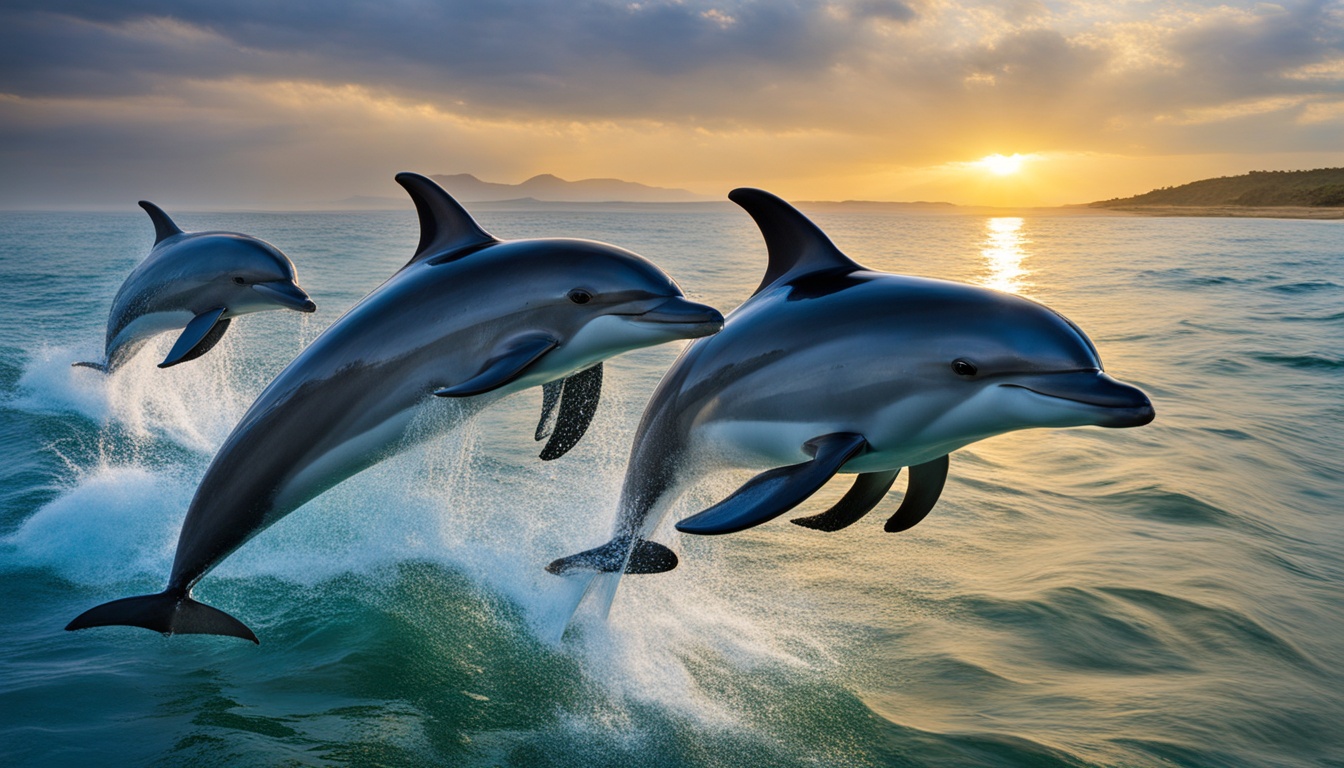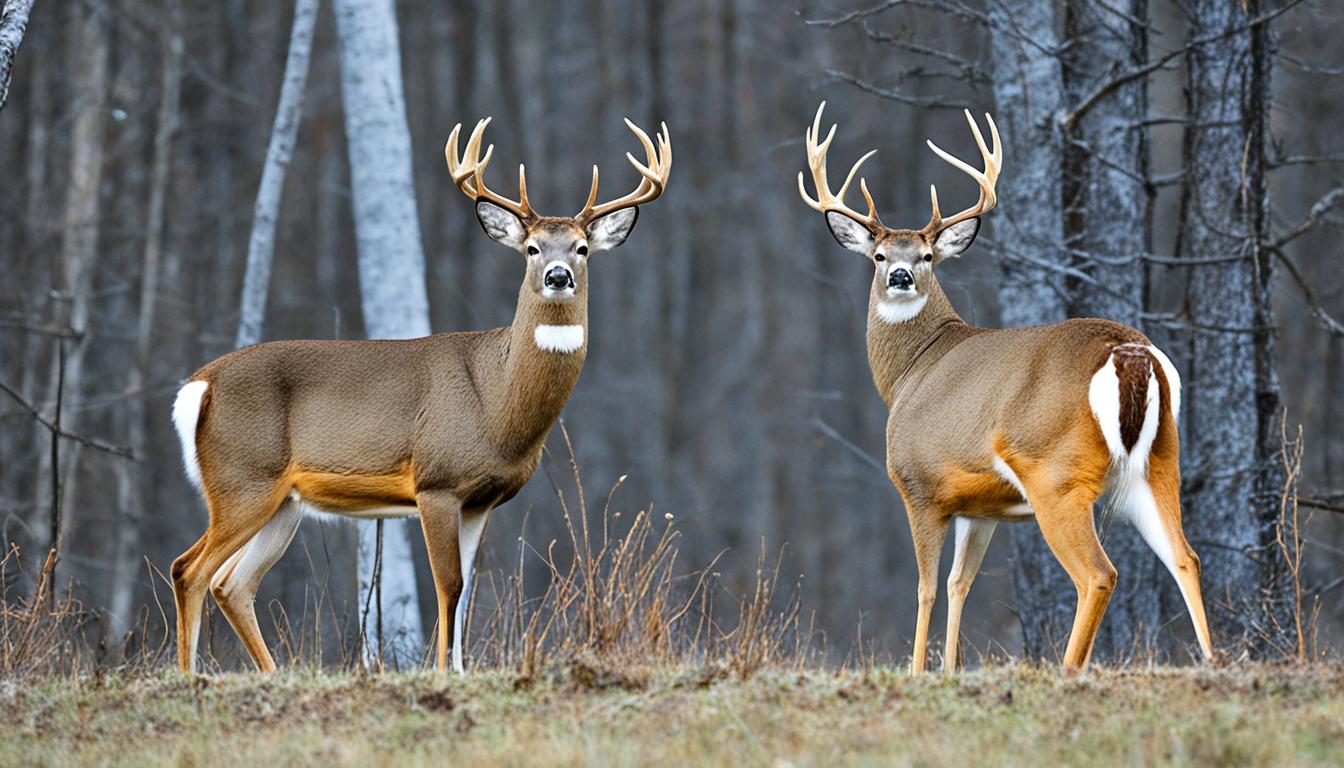Curious about the lifespan of wild chimpanzees? In this article, we’ll explore the average lifespan of these incredible creatures and discover what factors can influence it. So, let’s dive in and explore the fascinating world of chimpanzee longevity!
Factors influencing chimpanzee lifespan
Various factors can influence the lifespan of chimpanzees. One of the key factors is the availability and quality of food. Chimpanzees with access to a consistent and abundant supply of high-energy and nutritious foods tend to have longer lifespans. This is because proper nutrition plays a vital role in supporting their overall health and well-being.
Another important factor is the presence of natural predators. Chimpanzees living in areas without predators, such as leopards, have a lower risk of predation-related mortality. This allows them to live relatively longer lives without the constant threat of predation hanging over them.
Additionally, the occurrence of disease epidemics can significantly impact chimpanzee lifespan. Just like humans, chimpanzees are vulnerable to various diseases, and outbreaks can lead to increased mortality rates. For example, the Ngogo chimpanzees in Kibale National Park did not experience major disease outbreaks during the study period, which likely contributed to their higher life expectancy compared to other chimpanzee communities.
Factors Affecting Chimpanzee Lifespan
“The availability of food resources and the absence of natural predators are two major factors that influence the lifespan of chimpanzees.”
Understanding the factors that influence chimpanzee lifespan is crucial for wildlife conservation efforts and the care of captive chimpanzees. It allows researchers and caregivers to implement measures to ensure a healthy and flourishing chimpanzee population, both in the wild and in captivity.
| Factors | Impact on Lifespan |
|---|---|
| Availability and quality of food | Positive impact; longer lifespans with proper nutrition |
| Presence of natural predators | Negative impact; lower predation-related mortality |
| Occurrence of disease epidemics | Negative impact; higher mortality rates during outbreaks |
https://www.youtube.com/watch?v=-BJ9I00k0Hk
By considering these factors, we can better understand the complexities of chimpanzee aging and work towards ensuring the well-being and longevity of these incredible creatures.
Lifespan of Captive Chimpanzees
In captivity, the median life expectancy for chimpanzees who survive to their first birthday is 31.7 years for males and 38.7 years for females (source). These figures are based on data collected from Association of Zoos & Aquariums (AZA) institutions over 35 years. It’s important to note that these figures exclude infant mortality, which remains a high-risk period even in captive settings.
Chimpanzees in captivity can live longer than the average age, with some individuals surpassing the median age. However, the overall lifespan of captive chimpanzees is shorter compared to their wild counterparts. This can be attributed to several factors, including the lack of natural habitat and the challenges of replicating a wild-like environment in captivity.
Table: A comparison of the lifespan of captive chimpanzees
| Gender | Median Life Expectancy |
|---|---|
| Male | 31.7 years |
| Female | 38.7 years |
While captivity provides chimpanzees with regular access to food, medical care, and protection from predators, it cannot fully replicate the natural conditions and social dynamics found in the wild. Chimpanzees in the wild have the freedom to roam vast territories, engage in complex social interactions, and forage for a diverse range of food sources. These factors, along with the absence of stressors associated with captivity, may contribute to the longer lifespan observed in wild chimpanzees.
Lifespan of Wild and Captive Chimpanzees: A Comparison
When comparing the lifespan of wild and captive chimpanzees, several factors come into play. While captive chimpanzees tend to live longer on average, wild chimpanzees can also reach older ages if they survive to adulthood. Let’s take a closer look at the differences between the two populations and the factors that influence their longevity.
Differences in Lifespan
Wild chimpanzees have a similar or slightly lower average lifespan compared to captive chimpanzees. According to a study across different field sites, the average life expectancy for wild chimpanzees is 15 years. However, for those who survive to adulthood, their life expectancy can increase to an additional 15 years. This suggests that many wild chimpanzees can live beyond 27 years. In contrast, the median life expectancy for captive chimpanzees who survive to their first birthday is 31.7 years for males and 38.7 years for females. These figures are based on data collected from institutions over a period of 35 years.
One key factor contributing to the differences in lifespan is the availability of resources. Wild chimpanzees rely on their natural habitat for food and face challenges such as competition and scarcity. Captive chimpanzees, on the other hand, have a controlled environment with a consistent and nutritious food supply, leading to longer lifespans. Additionally, wild chimpanzees are exposed to predation, disease epidemics, and other factors that can reduce their lifespan.
Importance of Individual Variations
It’s crucial to recognize that lifespan variations exist within both wild and captive populations of chimpanzees. Factors such as genetics, overall health, access to resources, and social dynamics can all contribute to individual differences in lifespan. Some chimpanzees may live longer than the average age, while others may pass away before reaching the median age. Therefore, it is important to consider the unique needs and care requirements of each chimpanzee, whether in the wild or captivity, to ensure their well-being and conservation efforts.
| Wild Chimpanzees | Captive Chimpanzees | |
|---|---|---|
| Average Lifespan | 15 years[1] | 31.7 years (males)[2] 38.7 years (females)[2] |
| Factors Affecting Lifespan | – Availability of resources – Predation risk – Disease outbreaks[1] |
– Consistent and abundant food supply – Controlled environment – Minimal predation risk[2] |
In conclusion, while wild chimpanzees generally have a similar or slightly lower average lifespan compared to captive chimpanzees, the individual variations within each population cannot be overlooked. The differences in lifespan can be attributed to factors such as resource availability, predation risk, and disease outbreaks. Understanding these variations and addressing the specific needs of chimpanzees in both wild and captive settings is essential for their proper care and conservation.
Variations in Chimpanzee Lifespan
When it comes to chimpanzee lifespan, there are various factors at play that can create variations in how long these intelligent primates live. While the average lifespan for wild chimpanzees is around 33 years, individual variations exist that can result in some chimpanzees living longer and others passing away earlier. Understanding these variations can provide valuable insights into how to care for and conserve these remarkable animals.
One of the key factors influencing chimpanzee lifespan is genetics. Just like humans, chimpanzees can inherit certain genetic traits that can either contribute to longer lifespans or increase the risk of health issues. Additionally, access to resources such as food and clean water can impact a chimpanzee’s overall health and longevity. Chimpanzees with sufficient access to nutritious and varied food sources tend to have better overall health and longer lifespans.
Social dynamics within chimpanzee communities can also affect lifespan. Chimpanzees are highly social animals and live in complex social structures. Factors such as dominance hierarchies, levels of aggression, and access to mating opportunities can all influence an individual’s stress levels and overall well-being. Higher-ranking individuals may have better access to resources, leading to improved health and potentially longer lifespans.
| Factors Influencing Chimpanzee Lifespan | Examples |
|---|---|
| Genetics | Inherited traits that impact health and longevity |
| Access to Resources | Availability of nutritious food and clean water |
| Social Dynamics | Stress levels, dominance hierarchies, access to resources |
In addition to genetics and social factors, the presence of natural predators and the occurrence of disease epidemics can also impact chimpanzee lifespans. Chimpanzees living in areas with higher predation risk may have shorter lifespans due to increased vulnerability to predation-related mortality. Similarly, disease outbreaks can significantly reduce populations and shorten individual lifespans.
In conclusion, variations exist in the lifespan of chimpanzees, influenced by genetics, access to resources, social dynamics, predation risk, and disease outbreaks. These factors highlight the importance of considering individual differences when caring for chimpanzees in both captive and wild settings. By understanding and addressing these variations, we can better ensure the well-being and conservation of these incredible creatures.
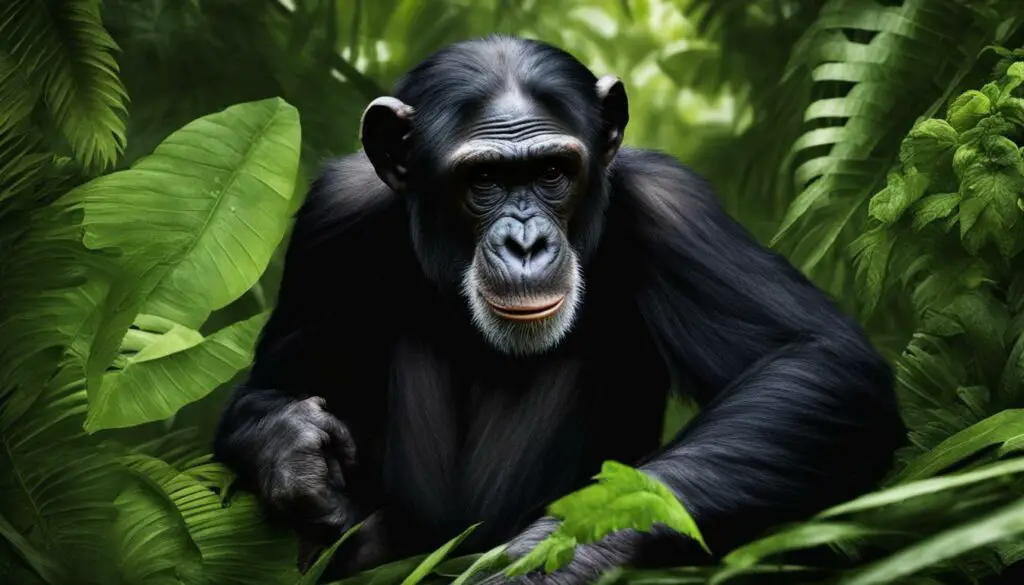
Conclusion
After examining the data, it is clear that the lifespan of chimpanzees can vary depending on whether they are in the wild or in captivity. Wild chimpanzees have an average lifespan of around 33 years, while captive chimpanzees have a median life expectancy of 31.7 years for males and 38.7 years for females.
Several factors contribute to these variations. In the wild, the availability and quality of food, the presence of predators, and the occurrence of disease epidemics all play a role in determining lifespan. For captive chimpanzees, factors such as genetics and overall health also come into play.
While captive chimpanzees tend to live longer on average, wild chimpanzees can also reach older ages if they survive to adulthood. Individual variations in lifespan are influenced by factors such as access to resources and social dynamics. By understanding these variations, researchers and caregivers can provide better care for chimpanzees and contribute to their conservation efforts.
Is the Average Lifespan of a Chimpanzee in Captivity Different from Their Lifespan in the Wild?
The average lifespan of chimpanzee in captivity is generally longer compared to those in the wild. In captivity, chimps are protected from predators and receive regular medical care. However, their lifespan in the wild is influenced by factors like availability of food, diseases, and predation.
FAQ
What is the average lifespan of a chimpanzee in the wild?
The average lifespan of a chimpanzee in the wild is around 33 years.
What factors influence chimpanzee lifespan?
Factors such as food availability, predation risk, disease outbreaks, and individual variations can influence chimpanzee lifespan.
What is the lifespan of captive chimpanzees?
The median life expectancy for captive chimpanzees is 31.7 years for males and 38.7 years for females.
How does the lifespan of wild chimpanzees compare to captive chimpanzees?
Wild chimpanzees generally have a similar or slightly lower average lifespan compared to captive chimpanzees.
Are there variations in chimpanzee lifespan?
Yes, individual variations exist due to factors such as genetics, overall health, access to resources, and social dynamics.

